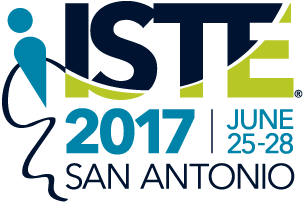Too many teachers today teach in a silo. They lock their doors and do not want visitors. They want to be the sage on the stage and font of knowledge. For their students, these teachers want to be the audience. They operate on a the notion that they must know everything.
Breaking down the four walls of the classroom is a foreign thought to such teachers. Reaching them and getting them to change their thinking is easier said than done. Such teachers are afraid they have to change the way they teach. They are comfortable teaching a certain way and fear change "discredits" the way they've always done things.
The way they've always done things simply doesn't work anymore. My esteemed colleague Joe Marquez (@joemarquez70) says to
deal with these types of resistant teachers, let them know that we are not changing the way they teach, we are changing the way they reach (students).
Step out of that silo, find authentic audiences and plan with the 4 C's. Make student learning fun, relevant and expose student learning to feedback.
When I moved, my cat wasn't happy. I had a hard time believing he'd stick around in the new house. He was just a free spirit who was used to the country. He wasn't going to like living in a tract home surrounded by homes with other cats.
This cat was a known escape artist. When we tried to make him a house cat, he always found his way out. To help him acclimate to the new house, I bought him a large dog kennel to contain him in the new yard. As soon as I put him inside, he was obviously unhappy. He paced and immediately searched for a way out. This kennel was the most confined the cat had ever been. I locked the door and went inside the house. Thirty minutes later, I went to check on him and he was gone. I couldn't tell you how he got out, but he did.
Why am I talking about my escape artist cat? Simple.
Constraints increase creativity. He needed more creativity than ever to escape the kennel. Learning structures provide constraints that increase creativity.
Don't put mundane tasks and rules within the structure of your lesson design. Provide autonomy, voice and choice to foster the increased creativity.
How many students can you think of that fail at school, but are totally badass at video games? I have dealt with more students like this than I can count. Why is this so? Why are they so bad at school, but play video games so well? Simple answer, growth mindset.
These students believe they can get better with trial and error. They immediately learn from their mistakes.
In the movie Predators, Lawrence Fishburn's character notes that the Predators learn and change tactics almost immediately after one of the human prey defeats one of them. These predatory, technologically advanced aliens embody the growth mindset.
Every mistake is an iteration toward success.
Why cannot we foster this type of #failforward (Cori Orlando - @coriorlando1) in our classrooms? Short answer. It is not the way school has been traditionally done.
Leverage the growth mindset applied by students with video games, or the Predator, and watch the intrinsic motivation and learning increase.
What do these three #booksnaps and stories have in common? Non-traditional thinking of teaching, pedagogy and lesson design. Today's students are wired differently. What worked for our generation (I am an X-Ennial), doesn't work for students now. We can no longer expect students to adjust to antiquated pedagogy. We can no longer say "I'm gonna teach it this way and it's your responsibility to learn it." We need to flip traditional pedagogy on its head and adjust to the needs of the modern student. Long story short, the way we have done things, doesn't work well anymore.
Engage students, have them create and empower.


:format(jpeg):mode_rgb():quality(90)/discogs-images/R-890916-1356551351-7802.jpeg.jpg)









